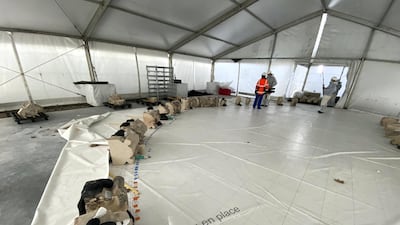The first oak trees destined to rebuild the iconic spire of the destroyed Notre Dame cathedral have been selected during a ceremony in a French forest.
A total of 1,000 oaks will be cut down to rebuild the cathedral roof and spire which was ravaged by fire in April 2019.
"This is a project that concerns the whole of France," said Gen Jean-Louis Georgelin, who chairs the body in charge of restoring Notre Dame.
"It will ensure the security of the cathedral for eight centuries, 10 centuries."
Oaks from every region of France are being used to rebuild the world-famous national monument.
The first eight oak trees were picked on Friday in Berce Forest in the Loire region.
About half of the trees will be from state land and the rest from private donations.
“It is a source of pride for the foresters of the National Forestry Office to participate in the rebirth of Notre-Dame de Paris,” said Bertrand Munch, director of the Forestry Office.
The cathedral's 96-metre spire was completely destroyed in the 2019 fire. It was made by architect Eugene Viollet-le-Duc in 1859.
The trees will be cut and stored for 12 to 18 months to prepare them for use in the reconstruction phase, which is set to begin in autumn 2022, allowing for a planned reopening of the cathedral in April 2024.
About two years after the devastating fire, reconstruction of the landmark continues despite the Covid-19 pandemic.
Work has now turned to rebuilding the interior of the 850-year-old cathedral after charred and potentially dangerous scaffolding that surrounded the building was removed last November, although lead poisoning is a major concern.
Members of Notre Dame's choir sang at the building for the first time since the blaze on Christmas Eve last year.











